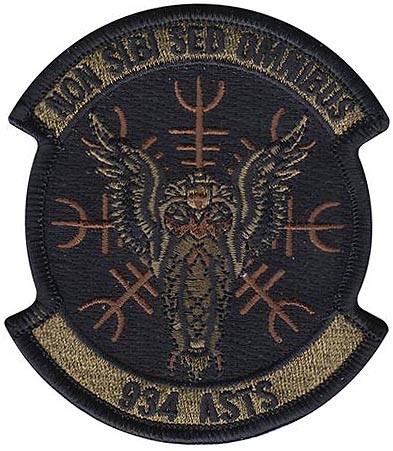Description
Computer made/mounted on velcro 3.5 inch-90mm
934th AEROMEDICAL STAGING SQUADRON (AFRC)
Lineage. Constituted as 934 Tactical Dispensary, and activated, on 15 Jan 1963. Organized in the Reserve on 11 Feb 1963. Redesignated as: 934 Tactical Clinic on 1 Apr 1973; 934 Tactical Hospital on 1 Oct 1989; 934 Medical Squadron on 1 Nov 1990; 934 Aeromedical Staging Squadron on 1 Oct 1994.
Assignments. 934 Troop Carrier Group (later, 934 Tactical Airlift Group; 934 Airlift Group; 934 Airlift Wing), 11 Feb 1963-.
Stations. Minneapolis-St Paul Intl Aprt (later, Minneapolis-St Paul IAP-Air Reserve Station), MN, 11 Feb 1963-.
Operations. Provides sustainment training of teams in the Air National Guard and Air Force Reserve with the use of high fidelity simulation. In collaboration with the Minneapolis Veterans Affairs Hospital, the 934th CCATT continues medical education of Medical Doctors, Nurses, and Respiratory Therapists in trauma care to critically injured patients on the ground and in the air.
Service Streamers. None.
Campaign Streamers. None.
Armed Forces Expeditionary Streamers. None.
Decorations. Air Force Outstanding Unit Awards: 1 Oct 1988-30 Sep 1990; 1 Jul 1994-30 Jun 1996; 30 Sep 1998-1 Oct 2000; 1 Sep 2002-31 Aug 2004; 1 Sep 2005-31 Aug 2007.
Emblem. Approved on 8 Oct 1991; latest rendering, 19 May 2023.
CRITICAL CARE AIR TRANSPORT TEAM (CCATT)
The Critical Care Air Transport Team (CCATT) is a unique, highly specialized medical asset that can create and operate a portable intensive care unit (ICU) on board any available transport aircraft during flight. It is a limited, rapidly deployable resource and a primary component of the Air Force’s Aeromedical Evacuation (AE) System. The CCATT team is a three-person medical team consisting of a physician specializing in an area such as critical care, pulmonology, surgery, etc., along with a critical care nurse and a respiratory technician. The team is experienced in the care of critically ill or injured patients with multi- system trauma, shock, burns, respiratory failure, multiple organ failure and other life threatening complications. The complex, critical nature of the patient’s condition requires continuous stabilization, advanced care, life-saving invasive interventions during transport, and life or death decisions.
